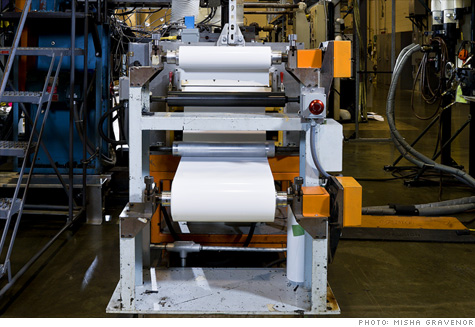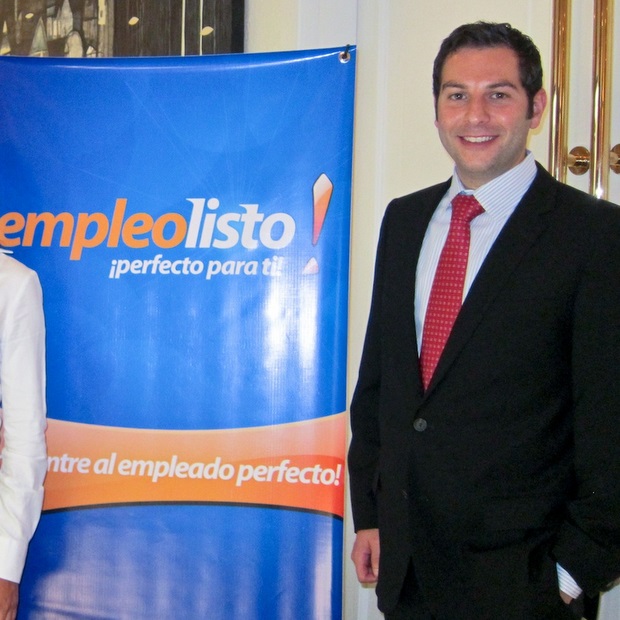 In my last post, I promised a look at why the term “graduated” makes little sense to me in the context of the National Science Foundation’s centers programs. I can adduce some theoretical arguments for my position, and I’ve also assembled a quick-and-dirty table (after the break) summarizing what I could find via superficial Web searching about the current status of centers that NSF regards as “graduated” from the ERC, I/U CRC, and MRSEC programs.
In my last post, I promised a look at why the term “graduated” makes little sense to me in the context of the National Science Foundation’s centers programs. I can adduce some theoretical arguments for my position, and I’ve also assembled a quick-and-dirty table (after the break) summarizing what I could find via superficial Web searching about the current status of centers that NSF regards as “graduated” from the ERC, I/U CRC, and MRSEC programs.
This empirical exploration revealed a bit more evidence for sustainability than I’d suspected, but on the whole I think it’s still unduly optimistic to believe that once federal funding stops, a university-based center will necessarily retain the essential characteristics of what was originally envisioned. That’s not to say the funding has been a failure, only that expectations for sustainability may be unduly high, or perhaps irrelevant.
innovation DAILY
Here we highlight selected innovation related articles from around the world on a daily basis. These articles related to innovation and funding for innovative companies, and best practices for innovation based economic development.
3M's innovation revival
 FORTUNE -- 3M is everywhere. That's the point George Buckley, the chairman and CEO of 3M, is trying to make as he talks about his favorite subject, inventing things. Last year, he says, "even in the worst economic times in memory, we released over 1,000 new products."
FORTUNE -- 3M is everywhere. That's the point George Buckley, the chairman and CEO of 3M, is trying to make as he talks about his favorite subject, inventing things. Last year, he says, "even in the worst economic times in memory, we released over 1,000 new products."
As if on cue, Buckley's new iPhone rings, showing a photo of his daughter. "Daddy's in a meeting," he says, and hangs up.
"I'm told there's some 3M inside that phone," I say. Buckley replies, "There's lots of 3M inside." He can't say exactly what 3M (MMM, Fortune 500) gadget is in the iPhone; Apple's (AAPL, Fortune 500) skittish about such things. But point well made: 3M is everywhere.
Partnership to foster research and business opportunities in the Southwest
 The U.S. Department of Agriculture (USDA) today signed an agreement with TechComm, an affiliate of the Center for Innovation in Arlington, Texas, to foster agricultural research opportunities between businesses and universities in the Southwestern United States and to help commercialize USDA-developed technologies.
The U.S. Department of Agriculture (USDA) today signed an agreement with TechComm, an affiliate of the Center for Innovation in Arlington, Texas, to foster agricultural research opportunities between businesses and universities in the Southwestern United States and to help commercialize USDA-developed technologies.
Officials with USDA's Agricultural Research Service (ARS) and the Center for Innovation signed the Partnership Intermediary Agreement today in Arlington, Texas. The Center also has a similar agreement with the U.S. Department of Defense (DoD) and the National Institutes of Health (NIH), allowing the Center to help coordinate projects between ARS, DoD and NIH. ARS is USDA's principal intramural scientific research agency.
Text Here for a New Job
 The MIT offspring, Assured Labor, connects job-seekers with employers via mobile SMS.
The MIT offspring, Assured Labor, connects job-seekers with employers via mobile SMS.
Assured Labor's Founder and CEO, David Reich, thought up his idea for a mobile, text-message-based employment service for low-income individuals while a graduate student at MIT's Sloan School of Management. He got together with fellow students at MIT and Harvard and together they hashed out a plan to launch in Boston, then slowly take over the world. With co-founders from around the U.S. and around the globe, the team launched in Mexico this week. From Mexico City, Reich told Fast Company how the latest launch is going.
Highland Capital Looks To Europe For Venture-Growth Deals
 A decade ago U.S. venture firms were considering European expansion
as firms like Accel Partners and Benchmark Capital led the charge. Accel
is still there and Benchmark’s unit spun out as Balderton Capital, but
most firms shelved their ambitions after the dot-com bubble burst.
A decade ago U.S. venture firms were considering European expansion
as firms like Accel Partners and Benchmark Capital led the charge. Accel
is still there and Benchmark’s unit spun out as Balderton Capital, but
most firms shelved their ambitions after the dot-com bubble burst.
But in 2007, Highland Capital Partners took the plunge, sending General Partner Fergal Mullen, a native of Ireland, to open the firm’s first European office in Geneva. Now, Lexington, Mass.-based Highland has added a second general partner, Laurence Garrett, formerly with 3i Group PLC, to its Geneva office.
We talked to Mullen about the investment climate in Europe and Highland’s plans there. Here is the edited interview:
SMEs, Entrepreneurship and Innovation
 Welcome to the entrepreneurial economy: small firms are playing an ever-increasing role in innovation, driven by changes in technologies and markets.Whilst some spin-offs and high growth firms are having remarkable success, however, the broad bulk of small firms are not capitalising on their advantages.
Welcome to the entrepreneurial economy: small firms are playing an ever-increasing role in innovation, driven by changes in technologies and markets.Whilst some spin-offs and high growth firms are having remarkable success, however, the broad bulk of small firms are not capitalising on their advantages.
This book explores how government policy can boost innovation by improving the environment for entrepreneurship and small firm development and increasing the innovative capacities of enterprises. Policy findings and recommendations are presented in three key areas: embedding firms in knowledge flows; developing entrepreneurship skills; and social entrepreneurship. In addition, country notes present statistics and policy data on SMEs, entrepreneurship and innovation for 40 economies, including OECD countries, Brazil, China, Estonia, Indonesia, Israel, the Russian Federation, Slovenia and South Africa.
Is a national Canadian culture important? If so, what would it be?
 It’s a sunny Sunday afternoon in Paris, and the streets of the Latin Quarter are teeming with life. People are strolling, shopping, lounging in cafés and queuing up around the block to see a new romantic comedy featuring two bankable French stars, Romain Duris and Vanessa Paradis.
It’s a sunny Sunday afternoon in Paris, and the streets of the Latin Quarter are teeming with life. People are strolling, shopping, lounging in cafés and queuing up around the block to see a new romantic comedy featuring two bankable French stars, Romain Duris and Vanessa Paradis.
Why America is No Longer Tops in Entrepreneurship
 If you've been feeling that our country isn't as hot a place for
entrepreneurs as it once was, it's not your imagination. A new study
from the Small Business Administration's Office of Advocacy shows the
U.S. has sunk to third place
when it comes to fostering entrepreneurial creativity.
Researchers for the SBA took a look at the Global Enterpreneurship and
Development Index, which looks at more than a dozen primary attributes
for supporting entrepreneurial effort. The upshot: The U.S. now ranks third behind Denmark and -- brace yourself! -- Canada.
If you've been feeling that our country isn't as hot a place for
entrepreneurs as it once was, it's not your imagination. A new study
from the Small Business Administration's Office of Advocacy shows the
U.S. has sunk to third place
when it comes to fostering entrepreneurial creativity.
Researchers for the SBA took a look at the Global Enterpreneurship and
Development Index, which looks at more than a dozen primary attributes
for supporting entrepreneurial effort. The upshot: The U.S. now ranks third behind Denmark and -- brace yourself! -- Canada.
Where
are we going wrong? The study found America strong in competitiveness,
startup skills, and new technology, but we fall short in cultural
support for entrepreneurs, our tech sector is weakening compared with
other countries' tech effort, and as a result we have fewer high-growth
businesses. Reasons we are weak in these areas include fallout from the
dot-com bubble of the early '00s, the recession, and simply the
comparatively better progress made by other countries.
California's innovation model … Michigan?
 If California wants to get its innovation game back, says venture capitalist Tom Baruch, it should look at Michigan.
If California wants to get its innovation game back, says venture capitalist Tom Baruch, it should look at Michigan.
That wasn't a misprint — much-maligned, Rust Belt-tagged Michigan.
We’re talking about my ancestral homeland here. I grew up in the southwest part of the state, where the recession and oil embargo of the 1970s drove unemployment in my little town above 40 percent.
I lived in funny-named places like Kalamazoo and Ypsilanti — both home to state universities and large auto plants — owned a home in one of the state’s innovation hubs, Ann Arbor, and worked in Oakland County, the biggest beneficiary of Detroit’s decline.
AngelGate dispute among Valley investors cracks wide open
 When TechCrunch editor Mike Arrington barged in on a secret meeting
of super angels, the wealthy individuals who are taking an increasingly
prominent role in startup investing, the facts were open to
interpretation. Arrington alleged that he heard the meeting was about
illegal collusion. That seemed so unlikely. But now an email sent by
investor Ron Conway (right) shows that there is a real fracture in the
angel group about whether there was an attempt at collusion, as
Arrington alleged.
When TechCrunch editor Mike Arrington barged in on a secret meeting
of super angels, the wealthy individuals who are taking an increasingly
prominent role in startup investing, the facts were open to
interpretation. Arrington alleged that he heard the meeting was about
illegal collusion. That seemed so unlikely. But now an email sent by
investor Ron Conway (right) shows that there is a real fracture in the
angel group about whether there was an attempt at collusion, as
Arrington alleged.
Two days ago, Arrington wrote a post where he alleged that the secret meeting that he crashed was in fact an attempt by a group of super angels, or well-heeled investors with their own funds, to illegally collude by agreeing to hold down startup valuations. At the time, it seemed pretty implausible that such a well-known group of smart people would try to get away with such a hare-brained scheme. (After all, these angels don’t control a significant percentage of the angel money being invested in companies).
Innovation Policy on a Budget
 After record-setting spending to keep the economy from the brink of collapse, the public has grown wary, even hostile, to the idea of more government pump priming. Even those who advocate additional public investment face daunting budget constraints. Does this mean that government is hamstrung when it comes to spurring innovation? Not at all. In its report, "Innovation Policy on a Budget: Driving Innovation in a Time of Fiscal Constraint," ITIF lays out a nine key ways to keep innovation going even if funds are limited. They include regulations to encourage rather than inhibit innovation, smarter tax policies, procurement reform, better use of technology to drive innovation and more.
After record-setting spending to keep the economy from the brink of collapse, the public has grown wary, even hostile, to the idea of more government pump priming. Even those who advocate additional public investment face daunting budget constraints. Does this mean that government is hamstrung when it comes to spurring innovation? Not at all. In its report, "Innovation Policy on a Budget: Driving Innovation in a Time of Fiscal Constraint," ITIF lays out a nine key ways to keep innovation going even if funds are limited. They include regulations to encourage rather than inhibit innovation, smarter tax policies, procurement reform, better use of technology to drive innovation and more.
Read the report.
The Only 10 Reasons You Should See Wall Street 2
 The new Wall Street movie has a lot of low points, but you should still see it.
The new Wall Street movie has a lot of low points, but you should still see it.
If for nothing else, because of these 10 reasons.
Why Technology Transfer Offices Should Focus on Sponsored Research and Ignore Royalties
A story by Xconomy’s Sylvia Pagán Westphal recently highlights a new approach to technology transfer licensing being taken by UNC Chapel Hill’s Office of Technology Development: The Carolina Express License.
At first glance, the agreement looks, as Westphal puts it, “not very sweet for the university.” UNC takes 0.75% of any exit transaction, but no equity, no milestones and only a 1% or 2% royalty. Here’s Westphal’s description of the UNC approach (including a witty juxtaposition of religious imagery):
“They call it the holy grail of tech transfer, though critics, I reckon, think of it more as heresy. Either way, it’s gutsy.”
Which Is Cheaper? Nuclear or Solar
 “Commercial-scale solar
developers are already offering utilities electricity at 14 cents or
less per kWh. Duke Energy and Progress Energy are limiting or rejecting
these offers and pushing ahead with plans for nuclear plants which, if
ever completed, would generate electricity at much higher costs — 14–18
cents per kilowatt-hour according to present estimates.”
“Commercial-scale solar
developers are already offering utilities electricity at 14 cents or
less per kWh. Duke Energy and Progress Energy are limiting or rejecting
these offers and pushing ahead with plans for nuclear plants which, if
ever completed, would generate electricity at much higher costs — 14–18
cents per kilowatt-hour according to present estimates.”
This is the research conclusion from a study entitled Solar and Nuclear Costs — The Historic Crossover authored by John O. Blackburn, PhD, Professor Emeritus of Economics and former Chancellor, Duke University.
The study’s premise is that traditional energy supplies including fossil and nuclear energy are experiencing what economists called “upward cost curves” or in other words, their costs keep going up and are not likely to ever go back down. However, the research claims of Blackburn/Cunningham are that renewable energy has achieved a “downward cost curve” over the last decade, namely that their prices have gone down and there is a strong likelihood that they will continue to fall in price.
Is America Really #1 in Innovation?
 Last month the World Economic Forum released its 2010-2011 Global Competitiveness Report.
Among the 131 countries analyzed, the United States ranks fourth
overall for global competitiveness (down from ranking second in 2009 and
first in 2008) but ranks number one for innovation. Such a finding
should comfort policy analysts and policy makers who have long augured
America is losing its innovation edge. It seems, while we could do
better in overall global competiveness, when it comes to innovation the
United States is the gold standard. All is well.
Last month the World Economic Forum released its 2010-2011 Global Competitiveness Report.
Among the 131 countries analyzed, the United States ranks fourth
overall for global competitiveness (down from ranking second in 2009 and
first in 2008) but ranks number one for innovation. Such a finding
should comfort policy analysts and policy makers who have long augured
America is losing its innovation edge. It seems, while we could do
better in overall global competiveness, when it comes to innovation the
United States is the gold standard. All is well.
But what are studies like the Global Competitiveness Report actually measuring? According the methodology section of the report, over two-thirds of the indicators are derived from what the WEF calls the “Executive Opinion Study.” The survey asks business leaders throughout the world questions such as, “How would you rate the protection of property rights, including financial assets, in your country? [1 = very weak; 7 = very strong].” For the report’s innovation subsection only one of the indicators—utility patents per million population—is based on hard data.
Eight-state technology transfer partnership to be based in Arlington
![]() Local government and economic officials are expected to announce a new economic development plan in Arlington on Sept. 23 based on transferring federal technology to the commercial market.
Local government and economic officials are expected to announce a new economic development plan in Arlington on Sept. 23 based on transferring federal technology to the commercial market.
Sen. Kay Bailey Hutchison is expected to unveil the plan during the Arlington Chamber of Commerce’s annual Gala and Awards Banquet. Hutchison worked with Chamber leaders to secure funding for TechComm (Technology, Commercialization & Manufacturing), a new partnership between the Arlington Chamber and the University of Texas at Arlington.
The Importance of Trust and Mentorship for Startups
 Part of me feels compelled to invoke the folktale of the frog and the
scorpion. You know the story: The scorpion seeks a ride across the
river, and the frog refuses, fearing the scorpion's poisonous sting.
The scorpion pleads, "You can trust me." And the frog acquiesces. But
as the frog bears the scorpion across the water, he feels the sting.
And as the poison spreads through the frog's body, paralyzing his limbs,
he asks the scorpion why he stung him as now, they both will drown.
"It's in my nature," says the scorpion.
Part of me feels compelled to invoke the folktale of the frog and the
scorpion. You know the story: The scorpion seeks a ride across the
river, and the frog refuses, fearing the scorpion's poisonous sting.
The scorpion pleads, "You can trust me." And the frog acquiesces. But
as the frog bears the scorpion across the water, he feels the sting.
And as the poison spreads through the frog's body, paralyzing his limbs,
he asks the scorpion why he stung him as now, they both will drown.
"It's in my nature," says the scorpion.
Honestly, I'm not sure whose nature I really want to allude to as poisonous here, in a day full of accusations and denials in the tech investment world. And while the tale of the scorpion and the frog is perhaps a cliched cautionary one, the story seems appropriate nonetheless.
Top 10 Pricing Mistakes Most Companies Make
 In the course of our engagements, we have seen examples of good and bad pricing policies across over 30 market verticals. This whitepaper details ten of the most common mistakes we have seen companies make when pricing their products and services.
In the course of our engagements, we have seen examples of good and bad pricing policies across over 30 market verticals. This whitepaper details ten of the most common mistakes we have seen companies make when pricing their products and services.
This white paper will reveal:
* 10 of the most common pricing mistakes companies make
* 8 case study mini examples of good and bad practices
* Bonus: 6 Steps to Higher Profits(TM) using Value Optimized Pricing
Please register to receive this free white paper. After registration, you will receive an e-mail almost instantaneously in your inbox with a of the Top 10 Most Common Pricing Mistakes Most Companies make:


 One of New York's newest and most active startup investors is barely old enough to rent a car. But
One of New York's newest and most active startup investors is barely old enough to rent a car. But 